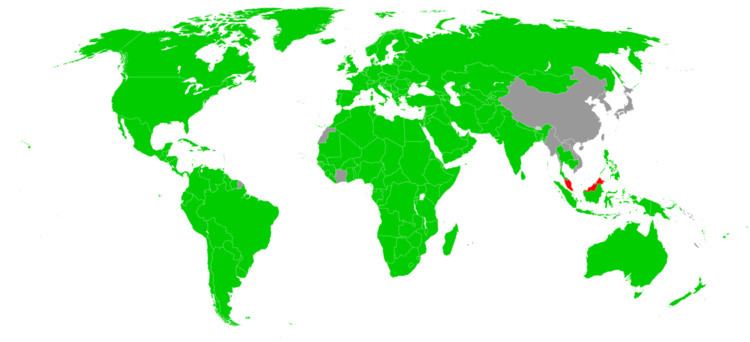Signed 25 June 1957 Condition 2 ratifications | Effective 17 January 1959 Languages French and English | |
 | ||
Parties 173(175 ratifications less two denunciations) Depositary Director-General of the International Labour Office | ||
Abolition of Forced Labour Convention, 1957, the full title of which is Convention concerning the Abolition of Forced Labour, 1957 (No. 105), is one of the eight ILO fundamental conventions of the International Labour Organization, which cancels certain forms of forced labour still allowed under the Forced Labour Convention of 1930, such as punishment for strikes and as a punishment for holding certain political views.
In order to implement the 1930 Forced Labour Convention and the 1957 Abolition of Forced Labour Convention, the Special Action Programme to Combat Forced Labour was set up.
Ratifications
As of May 2016, the Convention has been ratified by 175 of the 187 ILO members. The 12 ILO members that have not ratified the Convention are:
Two countries which had ratified the Convention—Malaysia and Singapore—have since denounced it. In addition, seven members of the United Nations are not members of the ILO and thus are not eligible to ratify the Convention unless they first join the ILO: Andorra, Bhutan, Liechtenstein, Micronesia, Monaco, Nauru, and North Korea.
